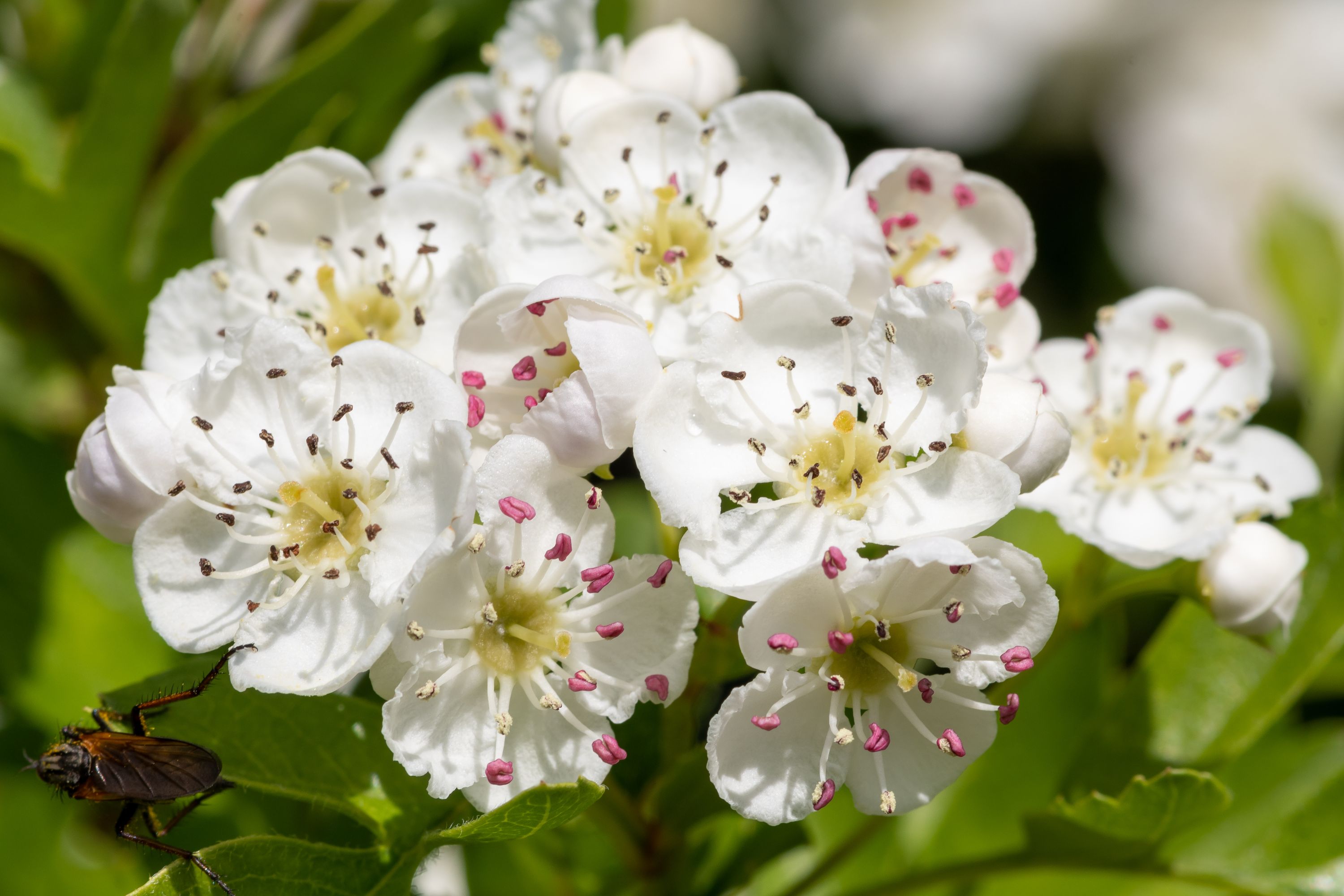Midland hawthorn
(Crataegus laevigata)

Description
Crataegus laevigata, known as the Midland hawthorn, English hawthorn, woodland hawthorn, or mayflower, is a species of hawthorn native to western and central Europe, from Great Britain (where it is typically found in ancient woodland and old hedgerows) and Spain east to the Czech Republic and Hungary. It is also present in North Africa. The species name is sometimes spelt C. levigata, but the original orthography is C. lævigata. It is a large shrub or small tree growing to 8 m (26 ft) or rarely to 12 m (39 ft) tall, with a dense crown. The leaves are 2–6 cm (0.79–2.4 in) long and 2–5 cm (0.79–2.0 in) broad, with two or three shallow, forward-pointing lobes on each side of the leaf. The hermaphrodite flowers are produced in corymbs of 6 to 12, each flower with five white or pale pink petals and two or sometimes three styles. The flowers are pollinated by insects. The fruit is a dark red pome 6–10 mm (0.2–0.4 in) diameter, slightly broader than long, containing two or three nutlets. Crataegus laevigata (fruits) It is distinguished from the closely related common hawthorn, C. monogyna, in the leaves being only shallowly lobed, with forward-pointing lobes, and in the flowers having more than one style. Each style produces a seed, so its fruits also have more than one seed and these make them slightly oval, in contrast with the single-seeded and therefore round fruits of common hawthorn. The two species hybridise, giving rise to C. × media. In the past, Midland hawthorn was widely but incorrectly known by the name C. oxyacantha, a name that has now been rejected as being of uncertain application. In 1753, Linnaeus introduced the name C. oxyacantha for the single species of which he was aware, but described it in such a way that the name became used for various species, including both the Midland and the common hawthorn. In 1775, Jacquin formally separated the common hawthorn, naming it C. monogyna, and in 1946, Dandy showed that Linnaeus had actually observed a different plant, C. oxyacantha. By this time, though, confusion over the true identity of C. oxyacantha was so great that Byatt proposed that the name should be formally rejected as ambiguous, and this proposal was accepted by the International Botanical Congress, although the name continues to be used informally.
Taxonomic tree:







